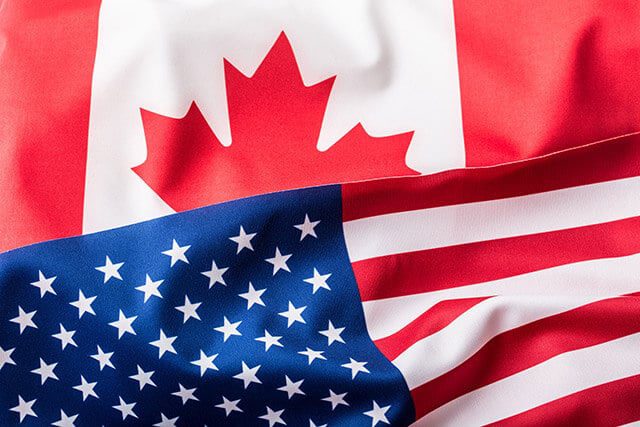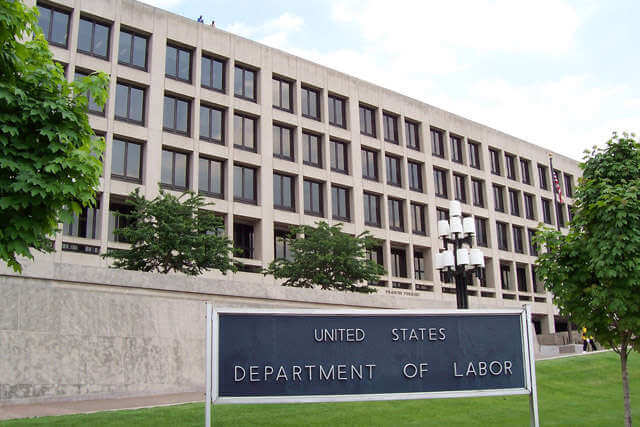Bringing Your Franchise Concept to the United States
By Michael Seid, Managing Director, MSA Worldwide
International Franchising: Opportunities and Tradeoffs
Franchisors looking to grow through international expansion have to choose where to put their resources – financial, human, and time. Opportunities must be prioritized, and there is often a tradeoff between where the franchisor sees the greatest opportunity, and where a potential franchisee steps forward and asks to bring the concept to their market. It can be tempting to put off entering what is perceived as a difficult market.
United States offers tremendous opportunity for international franchising. But at first glance, entering the market can seem a daunting task on two fronts. One is the size and complexity of the market itself. Second is the perceived difficulty of complying with Federal and State legal requirements, and the reputation of Americans as a litigious group of people. Both can be overcome.
Many of our clients at MSA Worldwide are foreign-based companies looking to franchise in the U.S. Those that have achieved the greatest success did their homework and created a market-driven strategy for establishing their brand in the U.S.
A Robust and Literate Consumer Market
As Americans, we often take for granted our good fortune in having a robust (even in difficult economic times) consumer-driven economy. With an educated and highly literate population, the United States offers a consumer market with a high level of disposable income.
Further (and especially important to those wishing to introduce a new concept), we demonstrate an abundant desire to try and accept new branded products and services. We constantly look for providers that can exceed our expectations, making new market entrances a possibility. Our population is largely concentrated (81.4%) in urban areas, and is diverse ethnically and religiously.
In a total population of over 330 million, the overall penetration of franchise-branded locations is still relatively low, with a per capita ratio of 379 franchised locations to each person nationwide.
| By Highest Population | |||
| State | Locations | Population | Per Capita |
| California | 82,739 | 38,041,430 | 460 |
| Texas | 66,355 | 26,059,203 | 393 |
| New York | 34,467 | 19,570,261 | 568 |
| Florida | 49,424 | 19,317,568 | 391 |
| Illinois | 36,106 | 12,875,255 | 357 |
| Pennsylvania | 29,514 | 12,763,536 | 432 |
| Ohio | 31,336 | 11,544,225 | 368 |
| Georgia | 32,546 | 9,919,945 | 305 |
| Michigan | 24,458 | 9,883,360 | 404 |
| North Carolina | 26,219 | 9,752,073 | 372 |
| By Lowest Population | |||
| State | Locations | Population | Per Capita |
| Wyoming | 1,782 | 576,412 | 323 |
| Vermont | 2,134 | 626,011 | 293 |
| North Dakota | 1,878 | 699,628 | 373 |
| Alaska | 1,990 | 731,449 | 368 |
| South Dakota | 2,300 | 833,354 | 362 |
| Delaware | 2,220 | 917,092 | 413 |
| Rhode Island | 2,422 | 1,050,292 | 434 |
| Montana | 2,974 | 1,005,141 | 338 |
| Maine | 3,674 | 1,329,192 | 362 |
| Hawaii | 2,800 | 1,392,313 | 497 |
The state with the lowest per-capita penetration is Iowa, with 262 franchised locations per person.
The dynamics of franchising provide ever-increasing benefit to consumers worldwide, and the U.S. is still an economic jewel that makes it an attractive place to expand.
For international franchisors, the attractiveness of an existing robust franchisee base, along with an ever-increasing acceptance of multi-unit ownership, enables more rapid achievement of brand recognition, critical mass, and lower unit support costs. Capital for franchisee expansion is relatively easier to obtain in the United States than elsewhere, and financial institutions are experienced in lending to franchisees. In addition, loan guarantee programs provided through the SBA (U.S. Small Business Administration) make the process of gaining capital by potential franchisees relatively simple, compared to opportunities in many other countries.
Common Fears about Expanding into the U.S.
Recently we spoke to an audience of experienced foreign-based franchisors, discussing their plans to expand into the United States and their perception of the difficulties before them. Each of them had existing franchised locations in countries outside of their home base. For the most part, these franchisors are relatively comfortable in general with franchise regulation in other countries, as disclosure laws are becoming more common around the world. The information and methods of expansion they use in developing their home and other country markets are generally easily adapted to the next country they chose to enter. That is, of course, not necessarily true when entering the United States.
The most often cited concern about franchising in the United States was fear. While the U.S. holds great promise for their brand, they recognize that we are not a homogeneous nation, and our diversity and sheer size is intimidating. There is a perception expressed by many that our maturity in many consumer and business categories can create obstacles they may not have needed to address elsewhere. A few cited our perceived penchant for solving minor issues with litigation, and a handful who were more knowledgeable about current affairs were concerned by the recent focus of labor unions on franchising and spoke to the actions of the NLRB, CFA, and others in advancing a host of new issues including increased labor costs and practices, limitations being imposed on locations available to chains operating in some areas, joint employment, and proposed relationship laws. However, their greatest concern, surprisingly, is still their perception that the regulatory scheme in the United States with our pre-sale disclosure, registration in some states, and differing laws are complex, and that the cost of compliance in time and dollars is prohibitively high.
It is difficult on the surface to argue that for a country that professes a belief in a free market economy, we present a picture to the rest of the world that franchisors in the United States need to jump through governmental hoops and requirements, and where often those challenges are not uniform from state to state. However, it is precisely because we have a free market economy, supported by a relatively well-defined regulatory scheme coupled with sophisticated and knowledgeable consulting and legal advisors, that makes franchising in the United States such an enviable success story.
Franchise regulations in the United States are based on the premise that the franchisor, within some relatively clear limitations, can choose their methods for expansion and can independently define the terms of its franchise offering. Franchise regulation has been a boon to its acceptance in the United States, because it has been rooted in the pre-sale disclose to potential franchisees presented in a structured format, and has eliminated to a great degree the fraudulent practices that occurred prior to the regulatory scheme being adopted. Potential franchisees receive the terms of the franchisor’s offering well in advance of their making their franchise investment, and are given the time to conduct a proper due diligence on the franchisor’s opportunity.
The Myth of Regulatory Complexity
The United States is a proven consumer-driven marketplace that seeks out and absorbs new products, services, and ideas. Our well defined and structured regulatory scheme (certainly not a perfect one) makes the United States one of the easiest markets to enter into for foreign-based franchisors. The perception of regulatory complexity really is a myth – it just may be different from what the foreign-based franchisor has experienced elsewhere. While our system may come with some additional costs and delays, when compared to the potential of the market, the additional costs are relatively minor. It is precisely because of regulatory requirements and pre-disclosure that franchisors and franchisees thrive in the United States. The attractiveness of the U.S. market is due to:
- Strong consumer acceptance of franchised concepts
- Largest and most experienced franchise market globally
- Clear, well-defined franchise and business regulation
- Access to capital and financing for franchisees
- Well-defined methods of recruiting franchisees
- Increasing number of multi-unit/multi-concept franchisees
- Significant brand protection
- Treaties and low barrier to foreign franchisor entry
- Significant supply chain capabilities
- Strong and improving economy
- Available labor and experienced management pool
- English as the predominant language
Planning Your Market Entry into the United States
Excessive franchisee litigation was the second most cited concern about conducting business in the United States. While franchisee/franchisor litigation is not uncommon, overall litigation in the United States is only slightly higher than that found in the U.K., for example. Fewer than 30% of franchisors have any litigation to disclose in their disclosure documents, and most of that is found in the larger franchise systems. Coupled with the pre-sale regulatory scheme and the advance of better management practices in working with franchisees, the rate of litigation in U.S. franchise systems is remarkably low considering the size of the franchise marketplace.
Still, it is a mistake to assume that, as a foreign-based franchisor, you can succeed by simply modifying your existing legal agreements to meet the legal requirements of the United States. Regardless of where your franchise is operating and which countries you plan to expand into, you still need to plan your market entry. This requires inward assessment of your strengths and capabilities, an understanding of whether your products and services will meet with consumer demand, and whether you will be able to effectively support your franchise organization to achieve your financial and other objectives.
- Are you ready to expand, and do you have the necessary financial and human resources?
- Do you have realistic expectations of the time and money it will take to enter the market, and your ROI in the early days?
- Are your supply chain, IT, and POS systems sufficient to meet your expansion goals?
- Do you have the resources to conduct a marketing program sufficient to introduce your brand and build a loyal clientele?
- Is there a market for your business, and do you have any advantage over the established competition both as a consumer offering and also as a franchise system?
- What modification to your “retail” and “franchise” offerings will be needed for you to be competitive, and, are those changes acceptable to you?
- Most important, can you and your franchisee achieve an acceptable return on investment in an acceptable timeframe?
There is a host of granular decisions and adaptations that are needed when you enter into any new market:
- The selection of the market based on language, culture, customs, age segmentation, consumer behavior, the frequency of purchase, etc.
- Whether or not a qualified and adequate pool of labor is available, and your capabilities to provide training and support to franchisees
- Your ability to adequately assess franchisee performance and enforce your brand standards
- Your supply chain and distribution costs and capabilities; impact of shipping, duties, etc., on inventory requirements and pricing
- Decisions regarding product, concept, operating system, advertising and marketing, location and design adaptations
- Unit economics including development costs, seasonality, pricing, and marketing strategies
- Selecting the proper structure of the franchise offering, and franchisees that are most suitable to support your needs – single-unit operators, multi-unit developers (investor groups, direct operators, conversion, strategic franchisees, master franchisees, area representatives, etc.)
- Preservation of alternative channels of distribution
- The availability and methods to attract a sufficient number of franchisees necessary to meet your critical mass requirements
- Your management team’s capabilities and commitment to executing your strategy
Determining the Franchise System Structure
There are a variety of methods franchisors have used in entering the U.S.; many foreign-based franchisors almost instinctively determine that offering master franchises is the right approach for them. However, choosing the right penetration and support approach requires significant thought and analysis. Master franchising and area representative structures used overseas are less commonly adopted by franchisors in the United States, and making the correct determination for your brand requires a considerable evaluation of the alternatives.
So where do you start? Although the scale is larger, the steps needed to enter the U.S. market are the same as you would use in evaluating any new market. In such a confined space as this article allows, the best I can offer you is a list of steps, each of which really requires a fuller explanation.
- Gather your competitive research and understand not just the overall U.S. opportunity, but the individual markets within the U.S. best suited for your brand. Develop a strategy for introducing your brand in area(s) where it will be easiest to gain acceptance, build critical mass, and plan to expand from these bases.
- Assemble your outside professionals, including your franchise consultants and lawyers, and begin the process of structuring your franchise opportunity.
- Establish realistic goals for your system in the United States. Make sure that your executive management team is on board as, with any international expansion, it may take longer and/or cost more than originally expected.
- Project the financial performance of your franchise system, and conduct an internal review of your current capabilities in key areas to determine if you are ready to expand into the U.S.
- Develop an initial U.S. location or two (direct or indirect), or determine if you can effectively enter the market with no U.S. prototype open and operating, and then monitor and evaluate your initial unit(s) performance.
- Establish solutions to your supply chain requirements.
- Determine how much of your existing operational support and capabilities can be leveraged for the United States. Do you need an office in the U.S. – if not immediately, then when?
- Design and develop your U.S. franchise offering:
- Its strategic structure and the terms of your offering
- Model the economics of the intended franchise system, including fees, for the franchisor and each intended franchise vehicle (single-unit, multi-unit, area developer, etc.) to be offered
- Discuss with your accountant and tax advisors establishing a U.S. subsidiary as the franchisor and whether to repatriate royalties or use them in the U.S. to support your franchisees and franchise sales efforts
- Make sure your U.S. trademark registration is up to date
- Develop the required franchise and other legal requirements with your U.S. legal advisor, including forming your franchisor entity and, as required, having its financial statements audited
- Modify your operations manuals and training programs
- Determine your human resource requirements, and begin the process of engaging the necessary franchisor staff
- Determine your franchisee sales strategy and tactics – internal sales, brokers, etc.
- Identify and prioritize your tactical execution
Resources for Professional Franchising Advisors
One great advantage for those wanting to franchise in the U.S. is that strong consumer acceptance of consumer brands has given rise to over 3,000 different franchised concepts, and that number of franchised concepts has fueled a well-established group of experienced professionals from attorneys to consultants, accountants to IT providers, and advertising and public relations firms, who can provide the assistance a franchisor needs in establishing, promoting and managing a viable franchise network. Entering the U.S. market may not be the right move for every company, but the reason for not coming to the U.S. should be based on solid business reasons.
Do you have questions about bringing your franchise to the United States?
MSA Worldwide provides expert guidance on choosing the right franchisees for successful and sustainable international franchise system expansion. Contact us today for a complimentary consultation.







